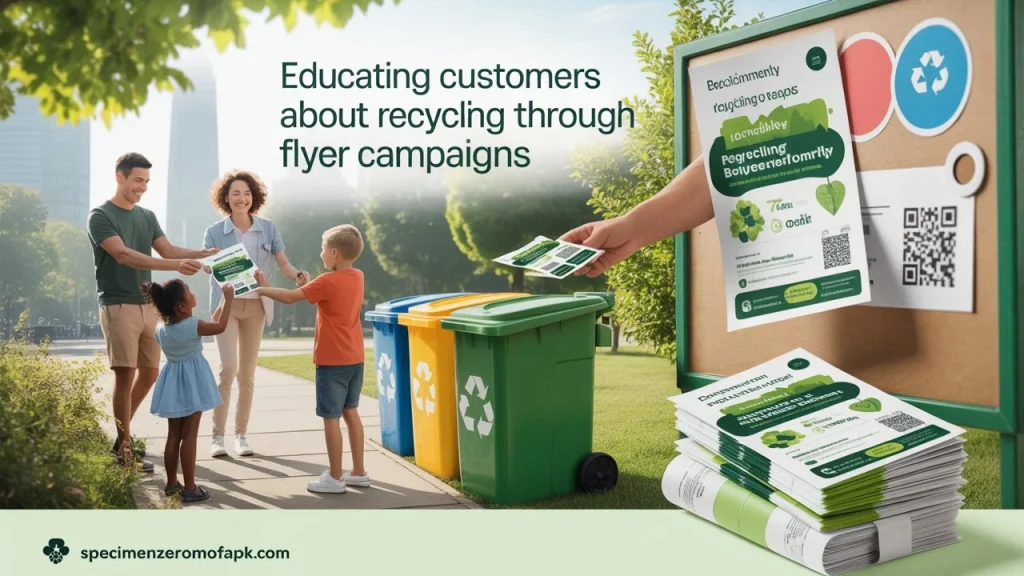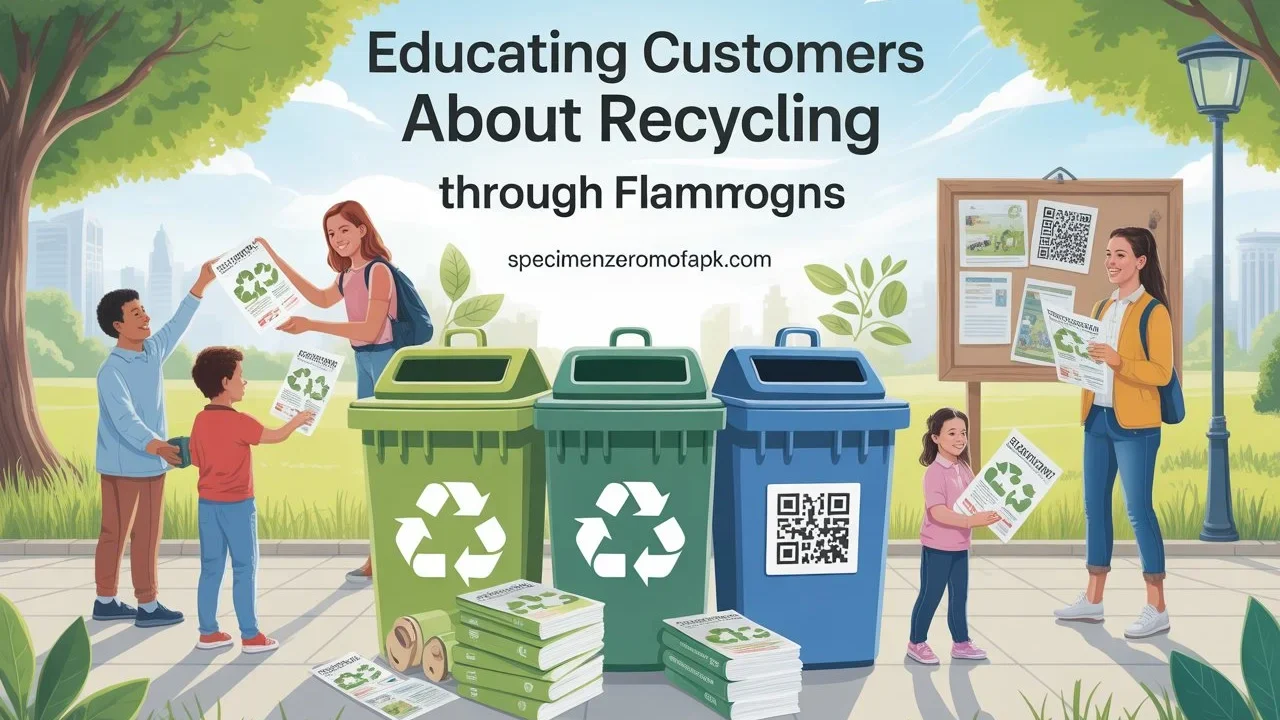In a world driven by fast consumption and short attention spans, inspiring people to recycle can seem like a challenge. Yet, one of the most timeless and effective communication tools, the flyer, remains an excellent medium to educate customers about sustainability. A well-designed recycling flyer doesn’t just share information; it motivates people to act, change habits, and join a movement for a cleaner planet.
With the right visuals, tone, and distribution strategy, flyer campaigns can spark genuine awareness about recycling in your community or customer base. Whether you’re a small business, NGO, or school running an eco-drive, you can easily create your own impactful materials using free customizable printable templates to spread your message widely and effectively.
Why Flyer Campaigns Remain Effective in the Digital Age
As social media and online advertising reign over our lives, physical printed flyers may seem old-fashioned, while still delivering impressive performances, especially for green and local campaigns.
In a recent mail survey, 79% of respondents retain, scan, or read direct mail pieces, including flyers, before deciding what to do with them. That brief instant of consideration is long enough to create a feeling reaction, especially when your flyer is communicating a sense of purpose, like going green.
Flyers have some unique strengths:
- Tangibility: People actually hold your message in their hands, increasing the likelihood of recall.
- Local applicability: Ideal for schools, coffeehouses, libraries, or neighborhood bulletin boards.
- Cost-effective: Cheap printing and copying make them accessible to all.
Flexibility: You can personalize messages to different groups of people, students, parents, and businesses, through design software and editable templates.
The Psychology of Recycling Awareness
In order to effectively teach, you must understand why people recycle or do not. Behavioral science research indicates that recycling behavior is primarily influenced by three drivers:
Knowledge: Individuals need to understand what is recyclable and how.
Convenience: Easy instructions and access points raise the level of participation.
Emotional connection: Individuals are more willing to act when they believe their contribution is significant.
Your brochure will have to persuade all three. Use fact and feeling together: e.g., “Every plastic bottle you recycle saves three hours’ worth of energy to power a light bulb.” Simple-to-remember information with positive images can help your campaign be inspiring and attractive.
Making Brochures that Inform and Encourage

1. Start with a Clear Message
The key to a successful flyer is simplicity. Use one strong, single idea, like “Recycle Today, Save Tomorrow” or “Your Trash Has a Second Life.” Avoid overwhelming readers with an excess of facts or verbose paragraphs. Treat your flyer like a picture storybook, not a data book.
2. Use Color and Imagery Effectively
Colors are capable of shaping emotion and behavior. Green represents sustainability and growth, blue trust and calm, and earthy colors elicit a connection with nature. Use high-quality imagery such as recycling symbols, bins, or scenery that will convey your message immediately.
In case your design skills are limited, use online platforms with nature-themed templates. These pre-editable templates will help you stay consistent and professional as you craft your message.
3. Make It Interactive
Include QR codes linking to:
- Local recycling programs or recycling centers
- Recycling and learning videos
- Your business’s sustainability website
When it’s convenient for people to act right away (scan, join, or learn more), participation skyrockets.
What to Include on a Recycling Flyer
Here is a structure that works well for learning campaigns:
Headline:
Start with a powerful, action-focused sentence like
“Don’t Trash the Future, Recycle It!” or “Small Actions, Big Impact!”
Main Visual:
Use clean, relevant imagery, such as a recycling bin, Earth logo, or before-and-after transformation photos of garbage to goods.
Learning Section:
Briefly define what can be recycled (paper, plastics, glass) and how it must be sorted. Use icons for simple understanding.
Call-to-Action (CTA):
Encourage users to sign up for your recycling program:
“Bring your recyclables on Friday to our community center!”
“Scan this QR to find your nearest recycling facility!”
Contact and Branding:
Add your logo, contact details, and website. A touch of consistency adds credibility and trust.
Turning the Campaign People-Oriented
To actually educate customers, your flyer campaign needs to do more than deliver; it needs to build a recycling community.
Partner with Local Schools and Universities
Engage students with challenges like “Recycle for a Cause” or “Paper-Free Week.” Encourage them to design flyers themselves; this experiential learning solidifies learning and activism.
Partner with Local Businesses
Stores and cafes can give out flyers, put them on checkout counters, or offer incentives for customers who bring in recyclables.
Promote Local Events
Leave flyers in public places, groceries, community boards, or bus stops, and schedule the campaign for Earth Day, World Environment Day, or local cleanup activities. Consistency begets familiarity and engagement.
Colors of Coverage
To gauge how well your flyer campaign is working, monitor:
QR code scans or link clicks
Drop-off recycling increases at certain sites
Social shares or tweets from using your flyer’s hashtag
Quantifying results sharpens your message and shows stakeholdersa concrete impact.
Print and Digital: A Winning Combination
Your recycling campaign today needs to have both offline and digital strategies. Use your printed flyer as the offline entry point, but give it maximum online visibility:
Make your flyer design into an online post or story.
Sharing PDFs in newsletters through email or social groups.
Having the same color scheme and message across all media to ensure brand consistency.
This combination ensures that even if your physical flyers go unnoticed, your message is seen on the internet.
Real-Life Example: “Green Gyumri” Community Drive
In Armenia, a youth-led movement called Green Gyumri ran a recycling awareness campaign with local flyers. They designed 1,000 flyers with a QR code that took users to recycling maps and volunteer sign-up sheets.
In fourteen days, they added 40% more volunteers to their ranks. What was the secret? Local statistics, personal images, and community pride, proof that even low-budget flyers can make a big difference.
Final Thoughts: Small Flyers, Big Change
Education of customers regarding recycling requires billion-dollar budgets and internet advertisements not at all; it starts with awareness, empathy, and imagination. Flyers, if properly planned, can turn information into inspiration.
Therefore, next time you plan an eco-awareness event, take your concepts, choose your tone, and make use of free printable editable templates to design flyers not only to educate but to stir people to care.

